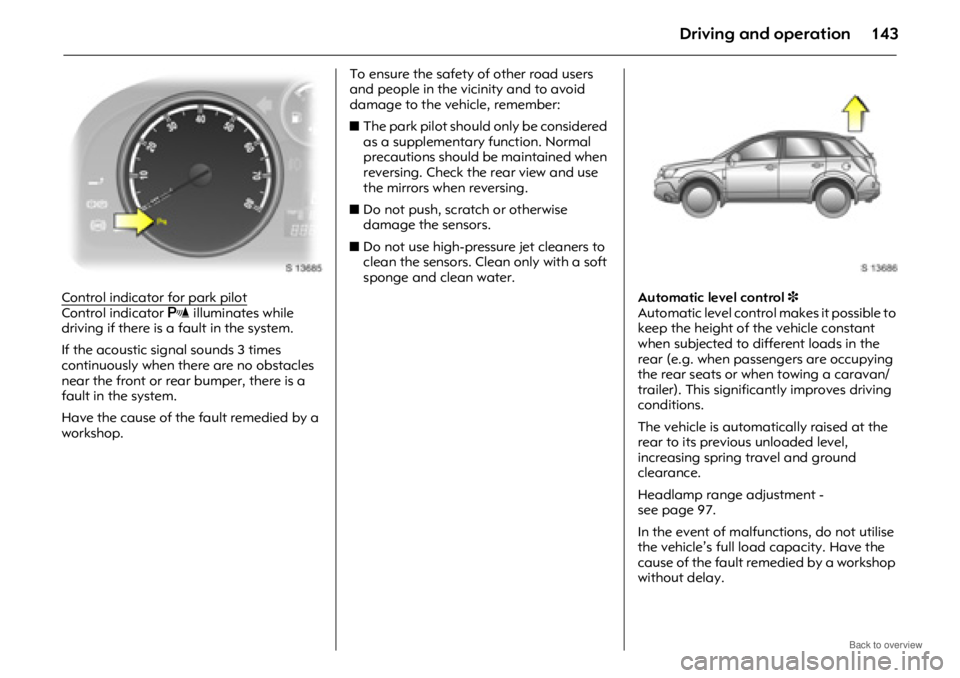Page 5 of 234

5
ContentsHandling characteristics
All Wheel Drive vehicles have a high centre
of gravity due to the increased ground
clearance required for off-road use.
A s w i t h o t h e r v e h i c l e s o f t h i s t y p e , f a i l u r e t o
operate the vehicle correctly may result in
loss of control or an accident.
Please read the sections "All Wheel Drive"
on page 121 and "Driving hints" on
page 127.In brief .........................................................6
Locks, doors, windows ............................ 21
Seats, interior ........................................... 36
Instruments, cont
rols ............................... 70
Lighting .................................................... 94
Infotainment system .............................. 101
Climate control ...................................... 103
Driving and operation .......................... 115
Self-help, vehicle care ........................... 171
Service, maintenance ............................ 206
Technical data ...................................... 215
Index ....................................................... 228
Page 124 of 234

Driving and operation124
The ground clearance, ramp angle, angle
of approach and departure and wading
depth need to be considered, especially in
hilly conditions and when wading, to
prevent the vehicle becoming stuck and
possibly damaged.
Technical data - see page 215. Driving through water
Do not exceed th
e maximum wading
depth.
Check the depth of water: choose the
lowest entry and departure angles before
entering.
Maintain a steady engine speed, to help
prevent water from entering the exhaust
system, but do not exceed 5 km/h (3 mph),
to avoid splashing the water.
Drive with the flow wherever possible, not
against it. If you have to drive against the
flow, try to drive at an angle to it, so that
the leading corner of the vehicle will help
deflect water from the engine
compartment.
Avoid splashing the water - if the ignition
system becomes wet, the engine may stall. Avoid water entering the air intake system.
Test the brakes after leaving the water -
wet brakes are less effective than dry ones.
Perform the service operations for wading,
involving checks for water contamination,
at the earliest opportunity.
Service checks after wading -
see page 126.
9 Warning
If water enters the air intake system,
engine seizure with severe costly damage
may result.
Page 143 of 234

Driving and operation143
Control indicator for park pilotControl indicator r illuminates while
driving if there is a fault in the system.
If the acoustic signal sounds 3 times
continuously when there are no obstacles
near the front or rear bumper, there is a
fault in the system.
Have the cause of the fault remedied by a
workshop. To ensure the safety of other road users
and people in the vicinity and to avoid
damage to the vehicle, remember:
z
The park pilot should only be considered
as a supplementary function. Normal
precautions should be maintained when
reversing. Check the rear view and use
the mirrors when reversing.
z Do not push, scratch or otherwise
damage the sensors.
z Do not use high-pressure jet cleaners to
clean the sensors. Clean only with a soft
sponge and clean water.
Automatic level control 3
Automatic level control makes it possible to
keep the height of the vehicle constant
when subjected to different loads in the
rear (e.g. when passengers are occupying
the rear seats or when towing a caravan/
trailer). This significantly improves driving
conditions.
The vehicle is automatically raised at the
rear to its previous unloaded level,
increasing spring travel and ground
clearance.
Headlamp range adjustment -
see page 97.
In the event of malfunctions, do not utilise
the vehicle’s full load capacity. Have the
cause of the fault remedied by a workshop
without delay.